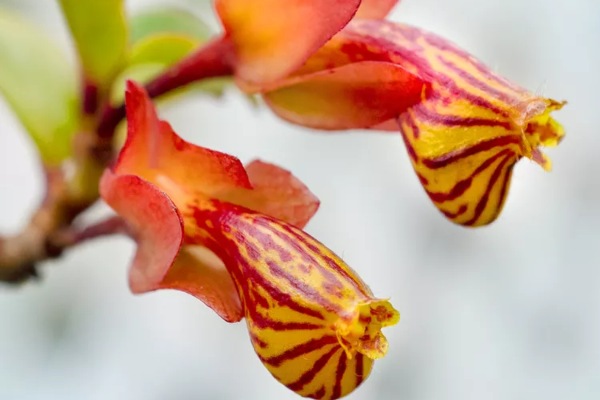What is a goldfish plant?
A goldfish plant is a beautiful houseplant that has masses of red-orange flowers that bloom in the spring and summer and resemble a leaping goldfish. They grow best in humid environments, bright light, well-draining acidic soil, and temperatures between 65 to 75 degrees Fahrenheit.
The eye-catching plant may look a bit hard to care for but it is worth it to enjoy its stunning beauty when grown in a hanging basket or containers.
Also popularly known as a Flying Goldfish plant, this tropical plant native to South America and Central America grows and flowers in an arching design. You can either grow this plant indoors or outdoors where the stem reaches up to 3 feet tall. If you plant it outdoors during spring, it grows actively while indoor plants can be potted any time of the year. They are decent growers so they only need reporting every few years.
Attributes of Goldfish Plants
- Common Name: Goldfish Plant, Flying Goldfish Plant
- Botanical Name: Columnea Gloriosa
- Family: Gesneriaceae
- Plant Type: Perennial
- Mature Size: 3 ft. tall, 2 ft. wide
- Sun Exposure: Full, indirect
- Soil Type: Well-drained, moist
- Soil pH: Acidic (5.8 to 6.2)
- Bloom Time: Spring, summer, fall
- Flower Color: Red, orange
- Hardiness Zones: Zones 10-12 (USDA)
- Native Area: South America, Central America
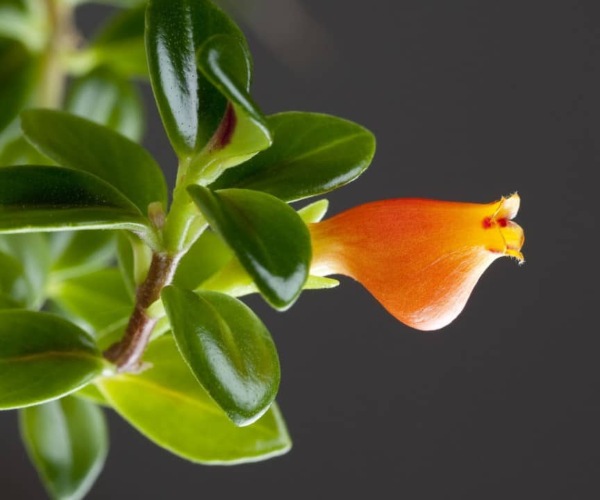
Also, Read Hanging Gardens: Discover 12 Stunning Indoor Plants for Vertical Spaces
How to care for Goldfish Plant?
Goldfish plants grow as houseplants and outdoors as well. Depending on the climate and humidity, this plant does better inside as it does not prefer very high temperatures. Also, excess rainfall can turn the foliage brown or drop as the plant needs time to dry out.
You can care for your goldfish plants by providing bright, indirect light, avoiding overwatering, and using nutrient-rich soil. Because it is a tropical plant, this plant requires humidity, so it is beneficial to use a humidifier or place it in a bathroom when showering to create a humid environment.
After it reaches 2 or 3 feet tall, snapping off growth encourages healthier blooms and improves the overall shape.
Light
Goldfish plants love bright, indirect light. They thrive if provided with the correct amount of natural light. So, place the plant near a window that doesn’t receive full exposure or use a plant lamp to maintain that environment. Since it is extremely sensitive to high temperatures, growing the goldfish plant as a houseplant during summer might be the best option.
Soil
Like most plants, well-draining potting soil works for growing goldfish plants. A good mixture of perlite, peat moss, and vermiculite will help with drainage and maintain healthy roots. If the soil is kept soggy, the roots can decay as it lacks nutrients or inefficient water.
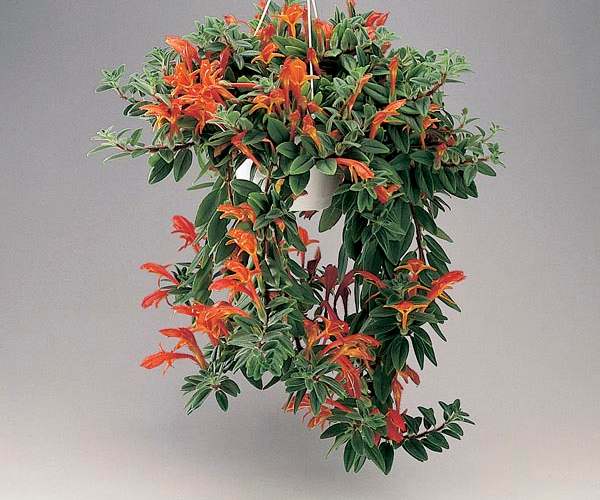
Water
Regular watering is necessary for this plant throughout its growing season-spring to fall as it maintains moist and well-drained soil. You can plant the goldfish plants in containers or hanging baskets with enough drainage holes to avoid soggy or rotting roots. You can use your hand to feel the top few inches of soil. You know it’s time to water when the top few inches are dry. During the cold winters, water sparingly, just enough to keep the plant from wilting or drying. Because of the soil’s dryness during this rest period, you will notice very little new growth.
Temperature and Humidity
Because it is a tropical plant, the goldfish plant requires humidity to survive. For this purpose, you can use a spray bottle to mist the plant, and increase the moisture when it’s growing indoors. You also have to maintain temperatures around 65°F to 80°F throughout the year. Temperatures that are too high or too low can cause the goldfish to bloom less. Be careful of fluctuating temperatures, cold snaps, extreme winds, or indoor air vents to keep it healthy and blooming.
Fertilizers
It’s healthy to fertilize your goldfish plants every two weeks during the growing season. Use a liquid, high-phosphate fertilizer diluted to half-strength after watering the soil so it is damp. This will provide the plant with the proper nutrients it requires.
Types of Goldfish Plants
Goldfish plants are found in different varieties, all with different, bold foliage and colorful flowers. Here are some types you need to know:
- Columnea hirta ‘Light Prince‘: This variation consists of variegated white and green foliage with bright orange and yellow flowers.
- Nematanthus ‘Tropicana‘: This tropical variety boasts flowers with red and orange stripes that pair beautifully with dark green leaves.
- Nematanthus ‘Green Magic‘: This cultivar features beautiful foliage and bright orange flowers.
- Nematanthus ‘Black Gold‘: The foliage on this plant features a glossy red tint, complemented by the orange-yellow flowers.
When to prune goldfish plant?
Pruning the goldfish plant is essential for redirecting and conserving energy to produce showier blooms. While this plant outdoors can reach up to 3 feet, pruning the stems closer to one foot tall will prevent them from becoming leggy.
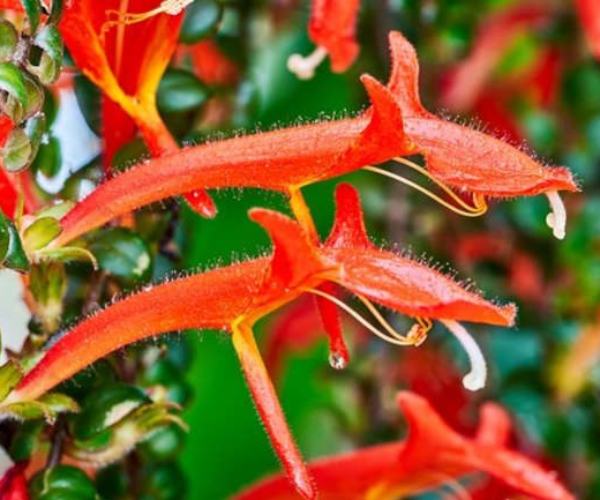
Always prune in early spring before the growing season to avoid accidentally removing new flowers. Make sure to prune the damaged, diseased, and old roots that help to build a stronger support system for the plant. These plants are relatively root-bound so it is necessary to avoid unnecessary transplanting.
How to propagate goldfish plants
You can propagate goldfish plants using stem cuttings taken during the growing season—spring and summer. This is the most effective way to grow goldfish plants. Here are a few steps on how to propagate the goldfish plant through stem cuttings:
- Use a sharp, clean knife to cut a stem at least four inches long during the growing season. Cut below the leaf node on a stem with no flowers or buds.
- After removing the bottom leaves, place the cuttings in a container filled with clean water. You can add a root hormone to the end of the stem that will encourage roots to emerge.
- Keep the cuttings in a warm place but not in scorching sunlight. You need to change the water weekly.
- In about two to three weeks, roots will grow but you have to wait until they reach about two inches to transplant into a container filled with potting soil.
- Propagated stem cuttings will start flowering the following year.
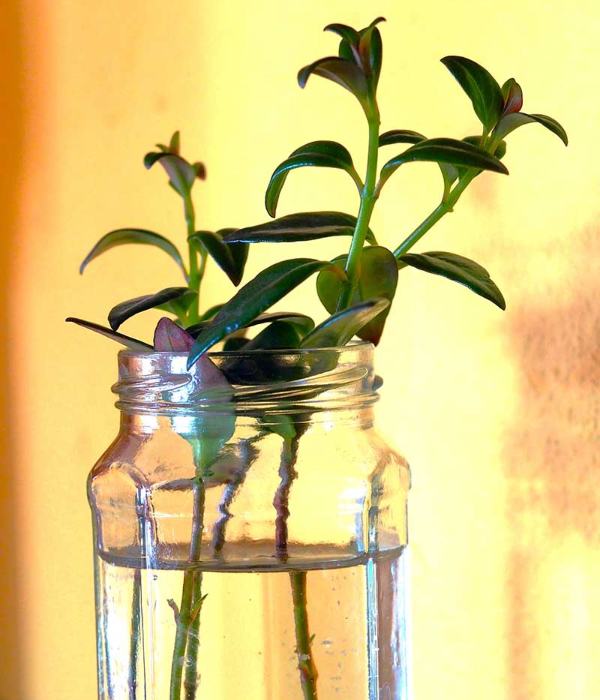
How to grow Goldfish plants from seed
Growing goldfish plants from seeds is a tough job because the flowers growing outside their natural habitat are hard to pollinate. But, if you want to give it a go, here are a few tips you need to know:
- Soak the seeds in water or a diluted cleaning solution for an hour or two.
- Drain the water and wash off any remaining solution before keeping them on a clean plate or dry towel.
- You can use a seed-starting tray that has moist potting soil and keep two or three seeds in every space. Then, cover the seeds.
- Mist the seed tray with a spray bottle and cover the whole container with a lid to lock in humidity.
- Keep the tray in an area that receives several hours of indirect sunlight daily.
- After a week or two, you can see sprouting.
Pests and diseases
Goldfish plants can be attacked by many common houseplant pests like aphids, mealybugs, and spider mites. Immediately remove the infected foliage if you see a change in its color due to sap-sucking insects or sticky honeydew residue. If the problem continues, spray the plant with a mix of neem oil and another insecticidal soap. Similarly, spider mites and mealybugs can also damage the goldfish plant. You have to maintain a healthy plant to avoid this from happening.
Other diseases that might infect goldfish plants are botrytis bunch rot and mosaic virus. Pruning the plant will provide enough air circulation for the plant and removing any damaged foliage will stop the spread of these diseases.
How to increase Goldfish plant’s bloom?
Spring to fall is the blooming time for goldfish plants as they go dormant during winter. This tubular structured flower looks like a leaping goldfish but is fragrant-free.
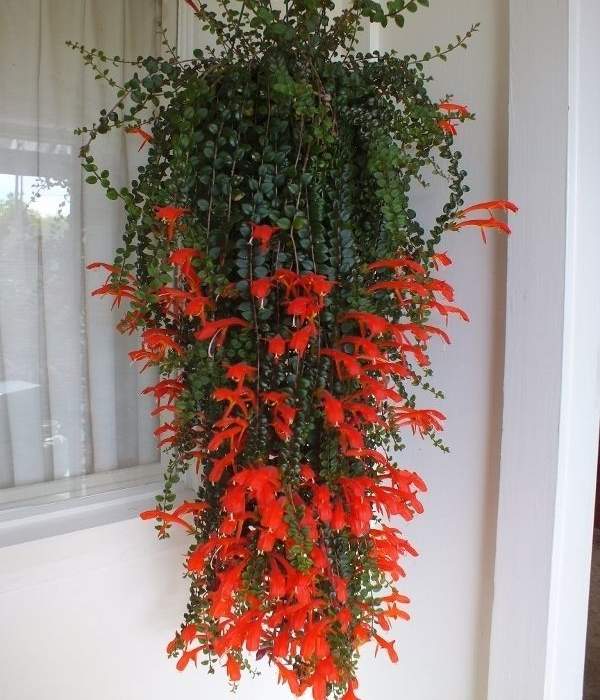
You have to keep the goldfish plants in a compact container in a bright location to encourage more flowers. During the spring and summer, give this plant a regular fertilizer once every two weeks and monthly during fall and winter. You can also get more blooms by pinching off new stems.
FAQs
Q: Is the goldfish plant toxic to cats?
A: Goldfish plants are not toxic to cats. Studies have found that they lack the toxic alkaloids found in some houseplants that can cause serious health issues for house pets. Having said that, a nibble won’t invite a disaster but it is still not recommended for cats.
Q: Why is my goldfish plant not blooming?
A: One of the many reasons why your goldfish plant isn’t blooming is insufficient light. These flowers love getting bright, indirect sunlight. Too little light ultimately leads to the sad absence of blooms. So, it is better to keep your plant where it can enjoy its light without being tortured by the direct rays of sunlight.
Also, Read How to Grow and Care For Euphorbia: A Complete Guide
